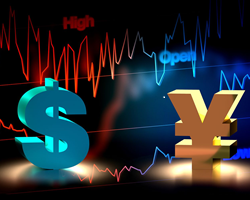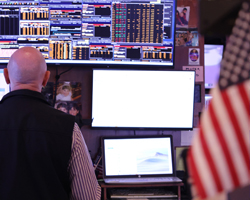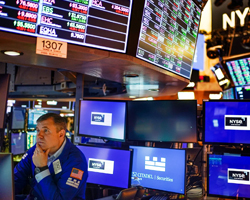Standard & Poor's Rating: What It Shows and Why Investors Need It
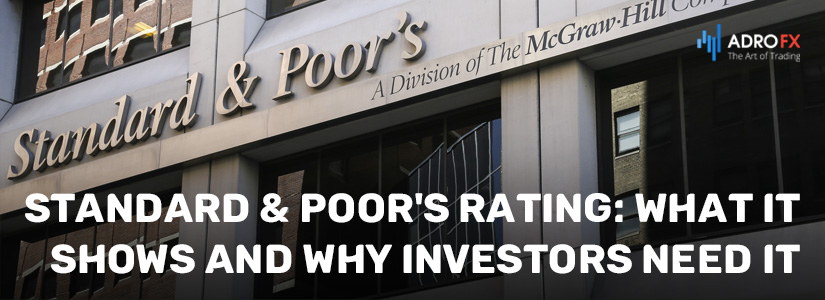
Credit ratings help investors categorize issuers of stocks, bonds, or entire nations by their level of debt risk. Depending on the level of credit rating assigned, you can understand the level of credit risk.
Ratings are issued by rating agencies that have different rating systems. One such agency is Standard & Poor's. Today we will learn more about it, including its importance for investors and traders.
What is Standard & Poor's Rating?
Standard & Poor's is an international rating agency that analyzes global, national, and corporate financial markets. It is one of the three global rating agencies along with Moody's and Fitch, issuing credit ratings on debt, companies, and countries based on their analysis. In addition, the agency compiled and regularly adjusts its indices of the S&P 500 (U.S.) and S&P 200 (Australia).
The history of Standard & Poor's began in 1941 after the merger of Standard Statistics Co. and Poor's Publishing Co. The agencies themselves were founded even earlier. Poor's Publishing was founded by Henry Poor in 1860 and since then it has been publishing analytics on industries to help European investors determine what to invest in the U.S. market. Today, Standard & Poor's is a subsidiary of publishing conglomerate S&P Global.
Standard & Poor's main activity is assigning credit ratings to companies, states, or individual municipalities. The agency evaluates the creditworthiness of the research object, after which it is given a rating characterizing the degree of risk of default on credit obligations or obligations to investors. The agency may evaluate individual bond issues, such as government or corporate bonds.
Thus, the agency Standard & Poor's, putting its ratings, reflects the quality of creditworthiness of the securities issuer. The rating level allows investors to assess the reliability of the issuer in terms of return on invested funds.
Features and Differences of the Standard & Poor's Rating Scale
Despite external similarities, the Standard & Poor's rating scale has its differences. The grades are denoted in Latin letters, which does not distinguish them from the rating scales of other agencies, from A to D. A grades stand for best creditworthiness. SD means pre-default and D means default. The presence of this grade distinguishes the S&P scale from Moody's, where there is no grade denoting a state of default.
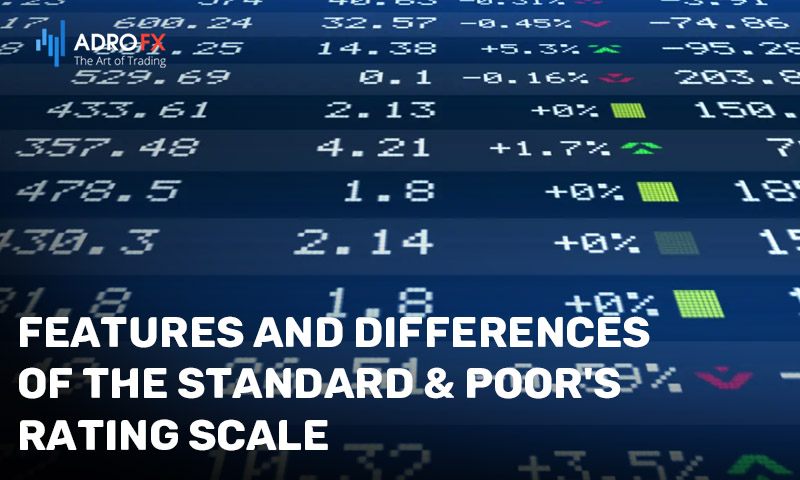
In turn, each letter denotes a different level of reliability and has its variations. They are separated by the number of letters from one to three, where three letters, such as AAA, are the highest grade in a given group and one letter is the lowest. A "+" or "-" sign may also be added to the letter designations (except for AAA, SD, and D grades) to show additional differences in the grades of the same group.
Scale scores are divided into three categories: investment grade, speculative grade, and default grade. The investment category includes grades from AAA to BBB-, while the speculative category includes grades from BB+ to C. The SD and D grades are the default category.
The investment grade is for assets whose issuers have the highest creditworthiness. These debt instruments are resistant to market turmoil in the long term, but the low risk can reduce the potential return on investment.
The speculative category includes issuers who are currently able to meet their credit obligations but are susceptible to changes in market conditions. Reduced demand, changes in interest rates, or other reasons can affect the ability of issuers in this category to fulfill their credit obligations. Therefore, issuers are very likely not suitable for long-term investment. It is important to know that the grade assigned is not a universal signal for investment. To understand the risk more accurately, it is necessary to look more closely at other issuers and analyze the impact of external factors on them.
As of 2020, only Johnson & Johnson and Microsoft had the highest AAA credit rating. Russian companies Gazprom and Lukoil are rated BBB in 2020. Automotive concern Tesla is rated BB.
Standard & Poor's also maintains national rating scales. They do not differ from the basic S&P scale. Companies based in a country cannot have a rating higher than the sovereign rating.
Standard & Poor's may also supplement the rating with a forecast of the rating movement: positive outlook, negative outlook, stable outlook, and developing outlook.
The differences from other rating scales of Standard & Poor's are minimal. Moody's uses numbers from 1 to 3 instead of "+" or "-", for example, A1, Bb2, and Aaa3. The Fitch scale has three grades in the default category - DDD, DD, and D.
How Standard & Poor's Ratings are Useful and How to Use Them?
Standard & Poor's ratings are useful not only for investors but also for the issuers themselves and third parties.
For investors, a high issuer credit rating can be decisive when choosing assets to invest in. It is also more trustworthy for institutional investors who prefer long-term investments. Ratings are an additional element of an Issuer's analysis.
Issuers with high credit ratings allow them to attract funds from investors more effectively. High ratings from the world's leading credit rating agencies can stimulate demand for a company's securities and allow it to set a lower interest rate on debt assets.
Intermediaries and other companies also look at ratings to assess a company's cooperation with it and its ability to pay its debts.
A credit rating is not a measure of the profitability of an issuer's securities or an investment recommendation. A credit score refers to the ability to meet debt obligations.
Credit ratings carry weight when selecting fixed-income investment instruments. Municipal bonds can be rated on credit ratings. Also, company bonds are a debt instrument, which allows the ability to pay obligations to be assessed with credit ratings. S&P ratings allow you to compare issuers both nationally and internationally, as well as evaluate their debt obligations. This is a useful element of analysis, but not enough to fully assess investment risks.
Conclusion
Credit ratings allow you to rank stocks and individual bond issues by the level of credit risk. The higher the rating of an issuer or bond issue, the lower the probability of default.
In the global financial industry, credit ratings are integral to making important financial decisions in the debt capital market.
Still, keep in mind that a Standard & Poor's debt credit rating is not a recommendation to sell or buy an asset, nor does it express an opinion about the level of its market price or investment appeal. It is an assessment of the risk of default on a debt asset.
About AdroFx
Established in 2018, AdroFx is known for its high technology and its ability to deliver high-quality brokerage services in more than 200 countries around the world. AdroFx makes every effort to keep its customers satisfied and to meet all the trading needs of any trader. With the five types of trading accounts, we have all it takes to fit any traders` needs and styles. The company provides access to 115+ trading instruments, including currencies, metals, stocks, and cryptocurrencies, which make it possible to make the most out of trading on the financial markets. Considering all the above, AdroFx is the perfect variant for anyone who doesn't settle for less than the best.

